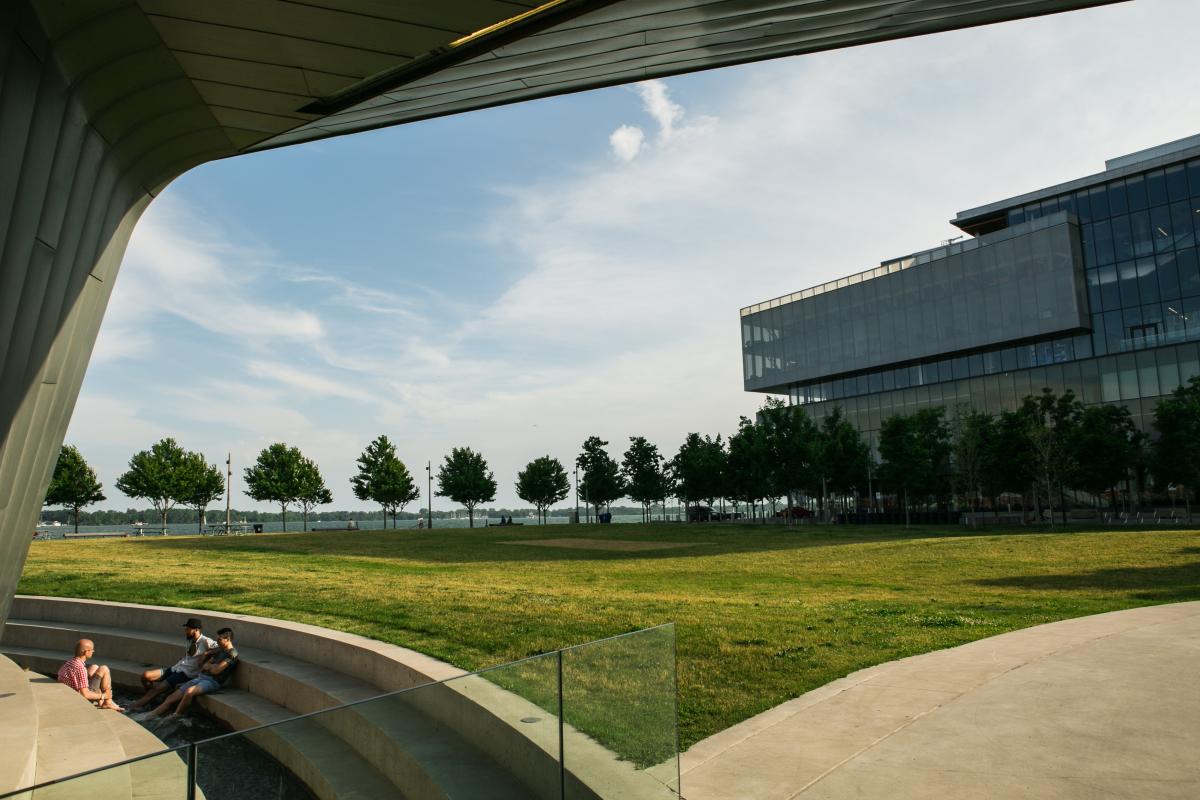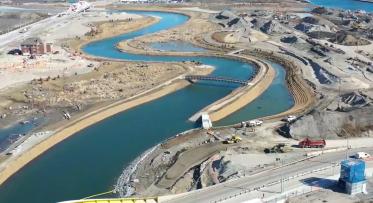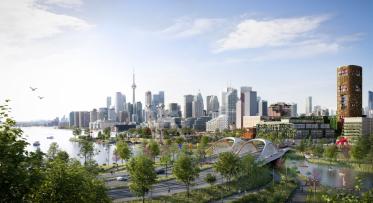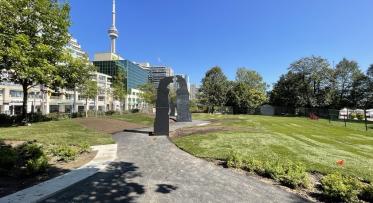From the Archives: Sherbourne Common (South)
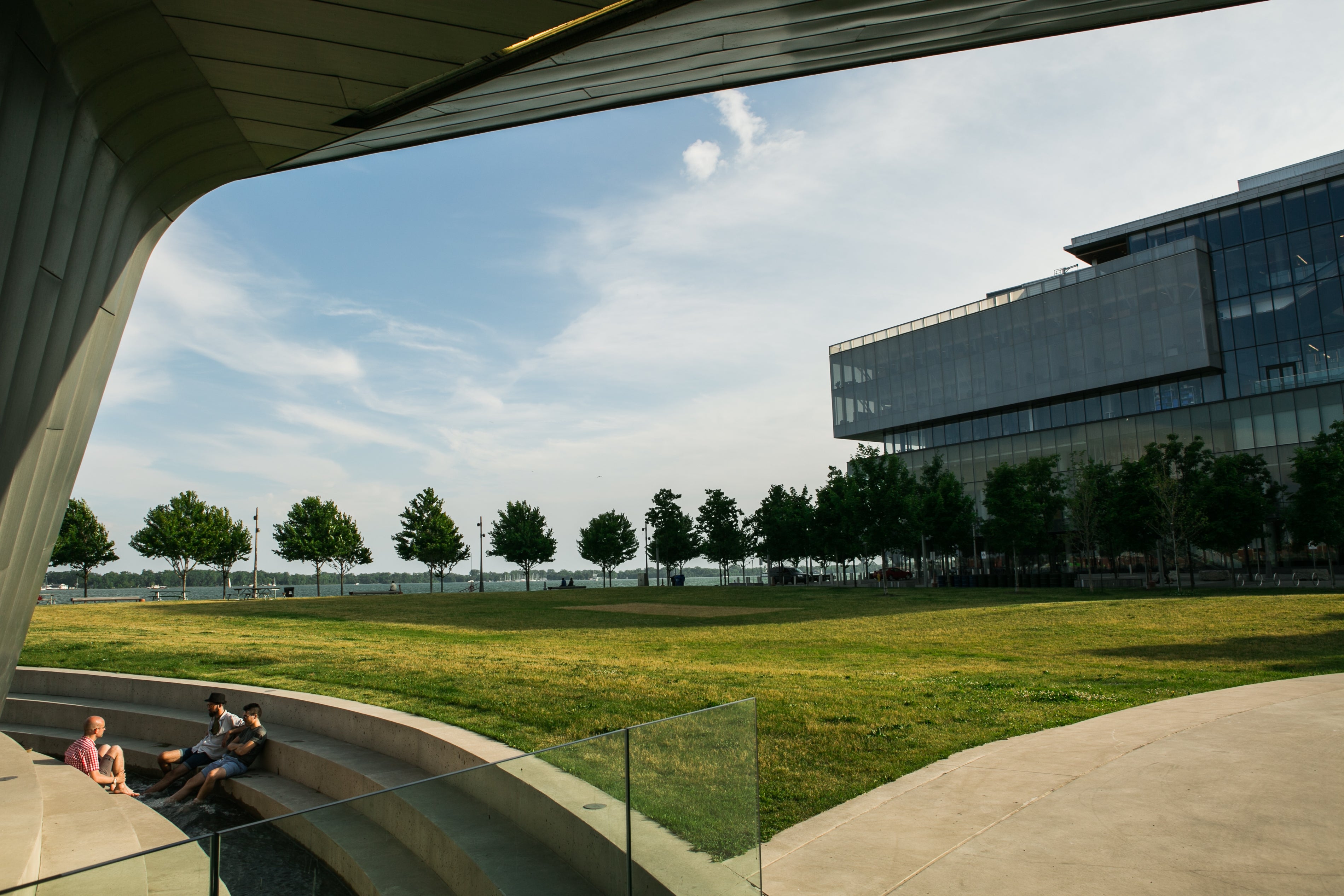
Sherbourne Common offers many architectural delights, including the urban river and pavilion located at its south end. (Image credit: Connie Tsang)
By: Meghan Hogan
If you’ve ever taken a walk along Queens Quay East, you may have stumbled upon one of the waterfront’s most unique public spaces – Sherboune Common. Located in the evolving East Bayfront neighbourhood, Sherbourne Common not only provides much needed green space to a former industrial area but also breaks the mold for conventional parks by offering a space that is beautiful, functional and innovative.
The park, which is located on either side of Queens Quay just east of Sherbourne Street, was completed in two phases. Phase 1 – or the south side – was completed in September 2010 and Phase 2 – or the north side – was completed in July 2011. Both sides feature exclusive elements that are worth discovering independently. Today, we’ll be exploring the south end of the park.

The Sherbourne Common pavilion has won several awards including the Toronto Urban Design Award of Excellence and the Canadian Architect Award of Excellence. (Image credit: Nicola Betts).
Designed by leading Canadian landscape architects Phillips Farevaag Smallenberg, this multi-award winning park is both a favourite neighbourhood amenity and a city-wide destination. The south side of the park includes a number of memorable features, the most obvious of which is its striking zinc-clad pavilion. Designed by Toronto-based Teeple Architects, the pavilion is as innovative and functional as it is beautiful. A water treatment facility, housed in the basement of the pavilion, collects and cleans stormwater from the surrounding area using ultraviolet (UV) light – making Sherbourne Common the first park in Canada to integrate a water treatment facility into its design. Once treated, the water is released back out to Lake Ontario through the park’s signature 240-metre long water channel, or urban river as we like to say.
Running the entire length of the park, the urban river offers park visitors lots of informal seating and the opportunity to cool off in the warmer months by dipping their feet into the flowing waters. You’ll also find four bridges that make crossing the river a breeze no matter where you are in the park.
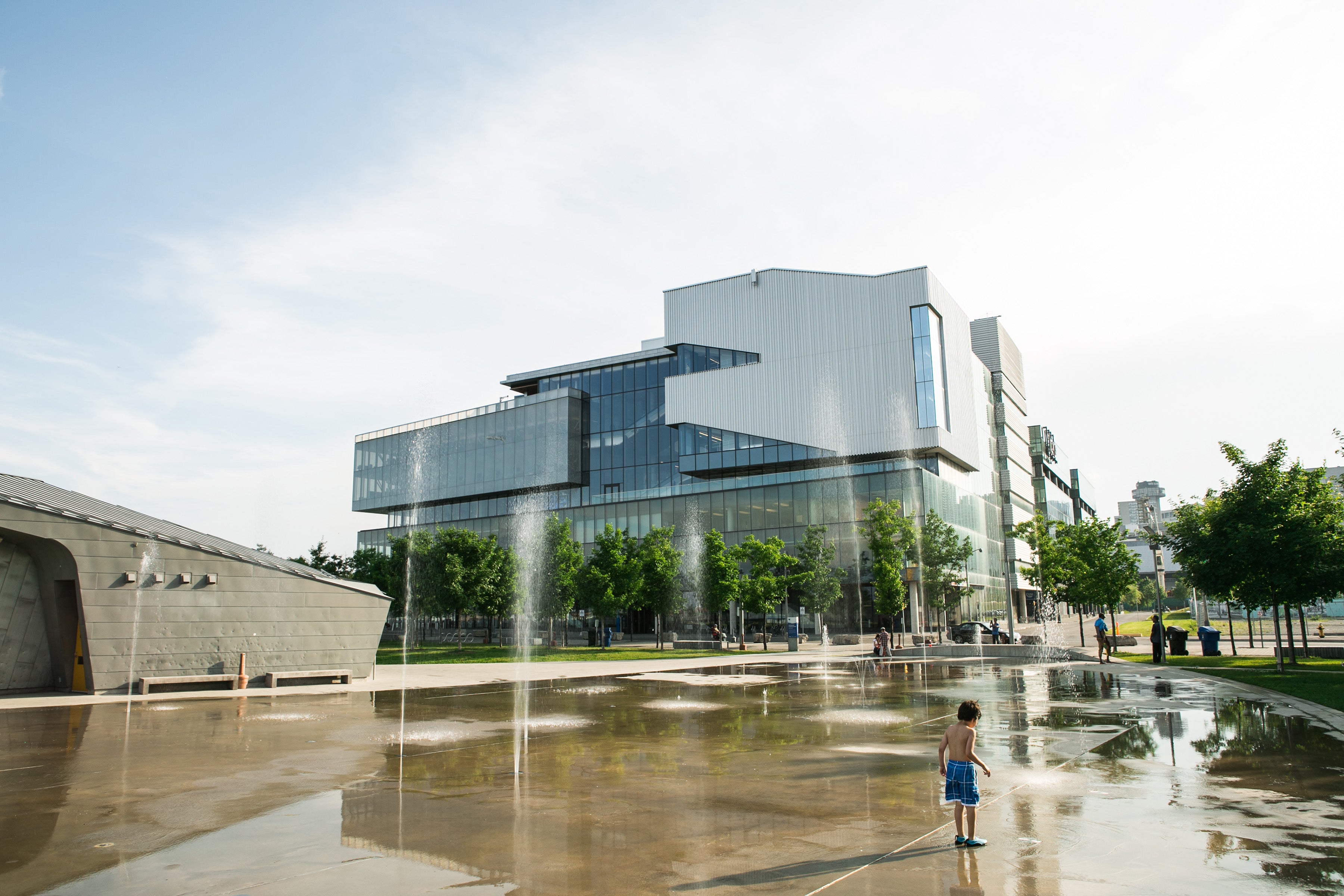

Like all waterfront parks and public spaces, Sherbourne Common was designed to be a usable public amenity during all four seasons. The park’s splashpad conveniently transforms into a skating rink during the colder months. (Image credits: Top - Connie Tsang; Bottom - Nicola Betts).
Another signature element of the park is the 920m2 splash pad that doubles as a skating rink in the winter, making it an accessible and functional amenity all year-round.
South of the splash pad and pavilion, you will find wide open green spaces that offer incredible views of the lake and the Toronto Islands. This space is intimate enough to organize an afternoon picnic or a spontaneous pick-up game, but also large enough to accommodate festivals, concerts, or special events. We look forward to presenting many exciting events here this summer.
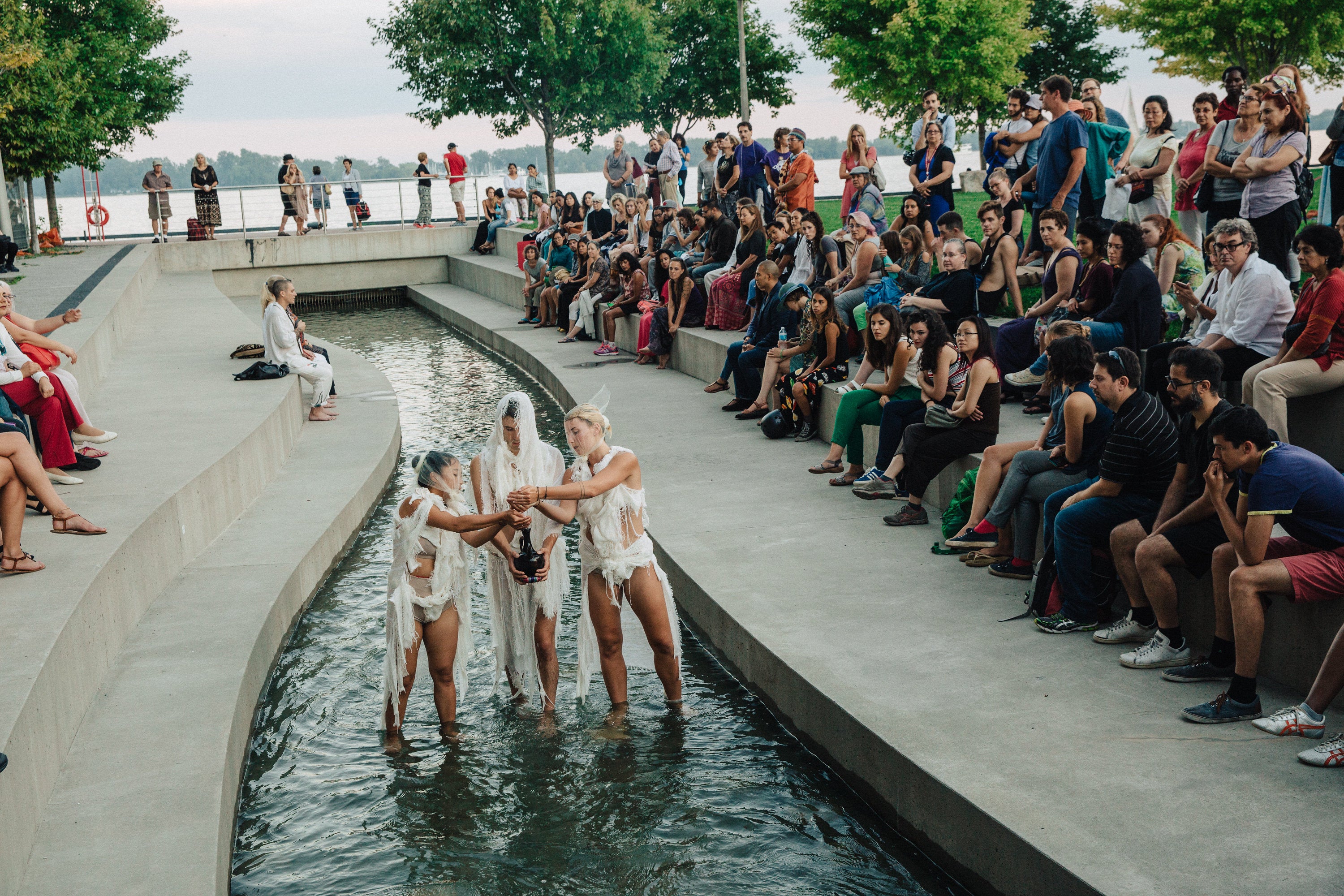
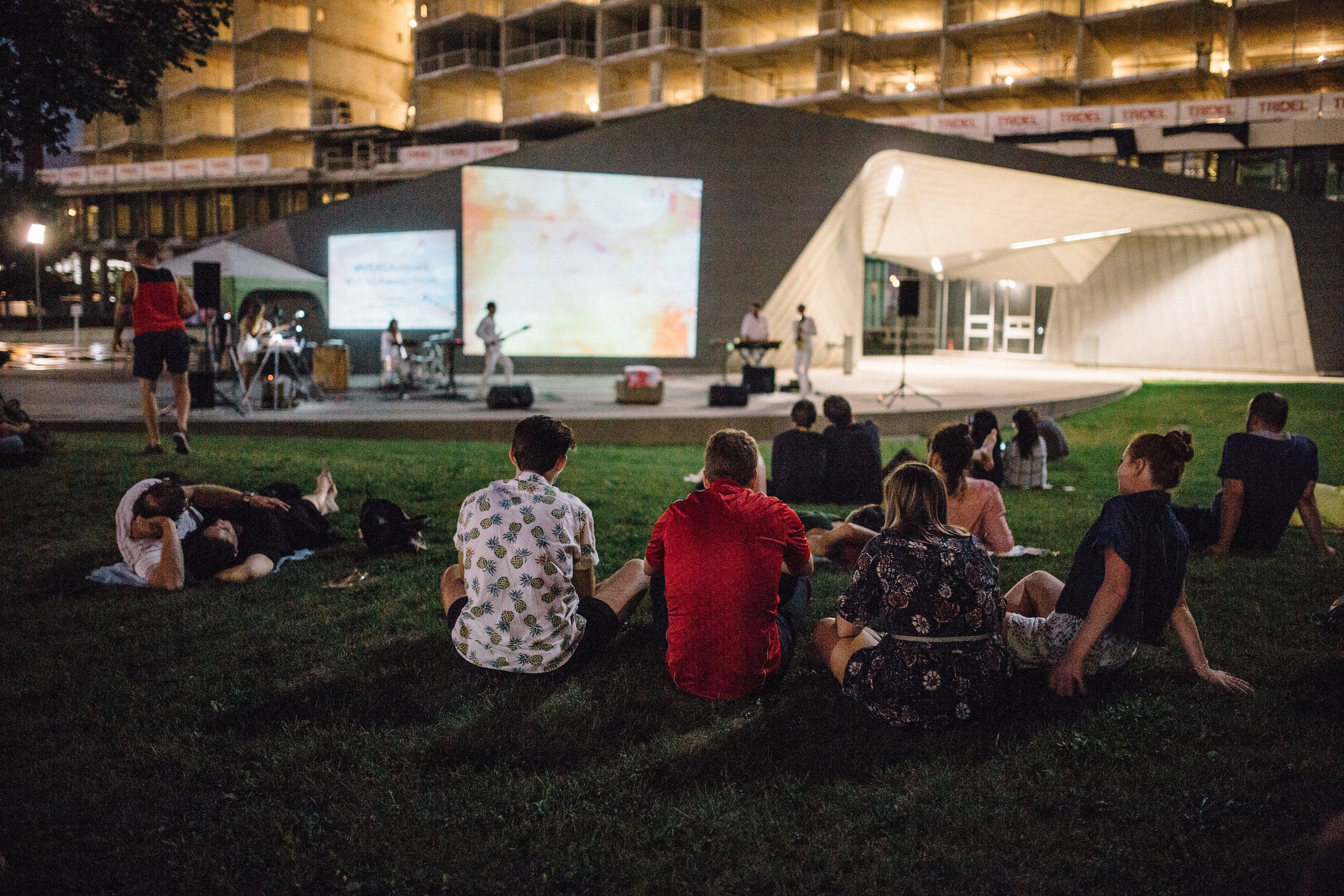
Top image: The Gata: Water Ceremony was an outdoor Buddhist opera that made use of all the park’s water features, including the urban river. Bottom image: Versa, a psychedelic audio/visual performance used the park’s pavilion as a canvas for projections during its performance in summer 2016. (Image credits: Connie Tsang).
Sherbourne Common is home to more than 192 trees (located on both the north and south sides) and includes a variety of species. Most of the trees can be found along the perimeter of the park with a number of benches scattered amongst them, offering visitors a place to rest and relax beneath the shade.
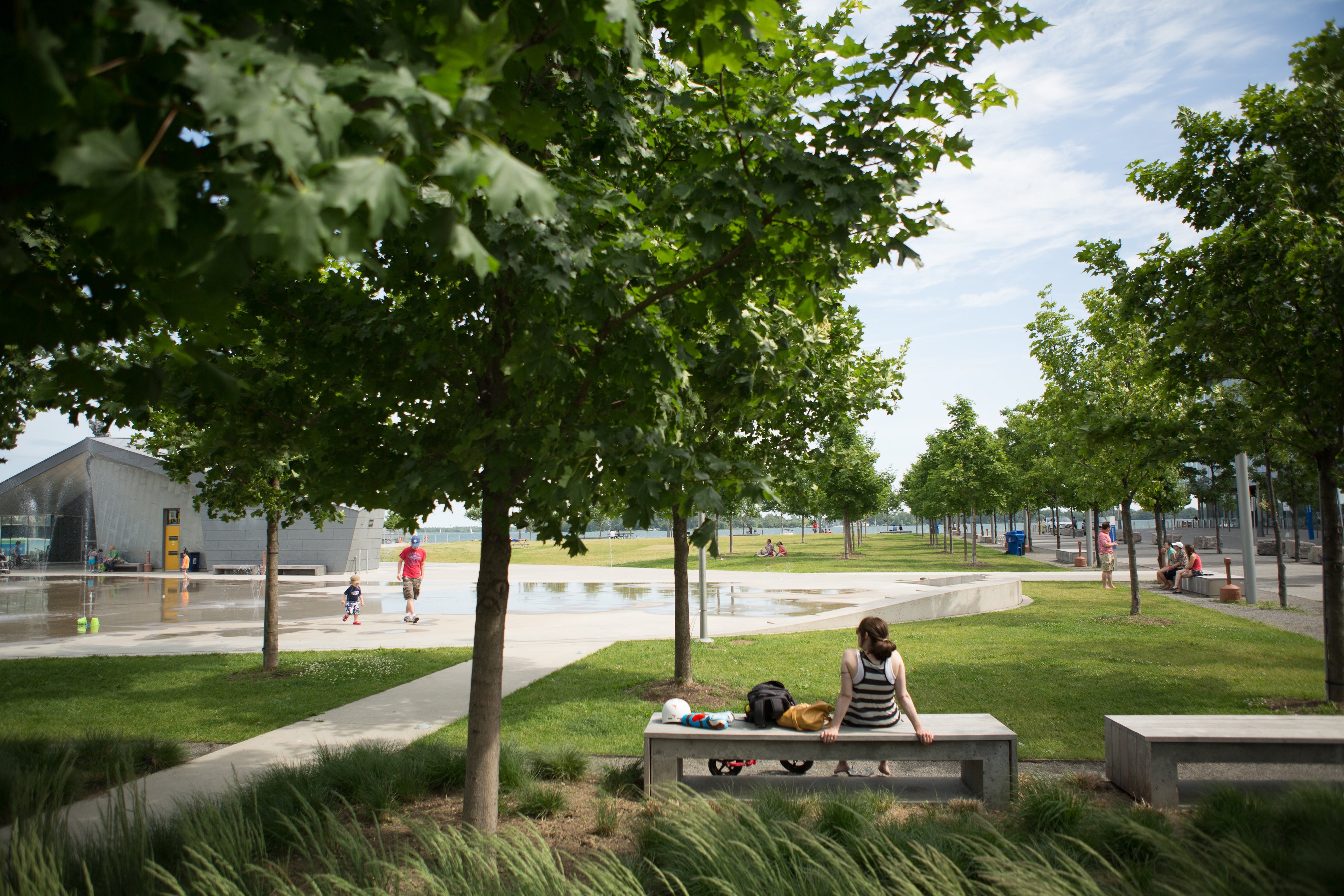
The trees at Sherbourne Common have filled in nicely and offer respite from the sun on a hot summer’s day. (Image credit: Connie Tsang).
Head to the park’s southern edge and you’ll find yourself at the popular Water’s Edge Promenade. This 900-metre promenade currently connects you with the George Brown College Waterfront Campus, Corus Headquarters, and Canada’s Sugar Beach, and features a double row of mature trees, signature benches and unparalleled waterfront access.
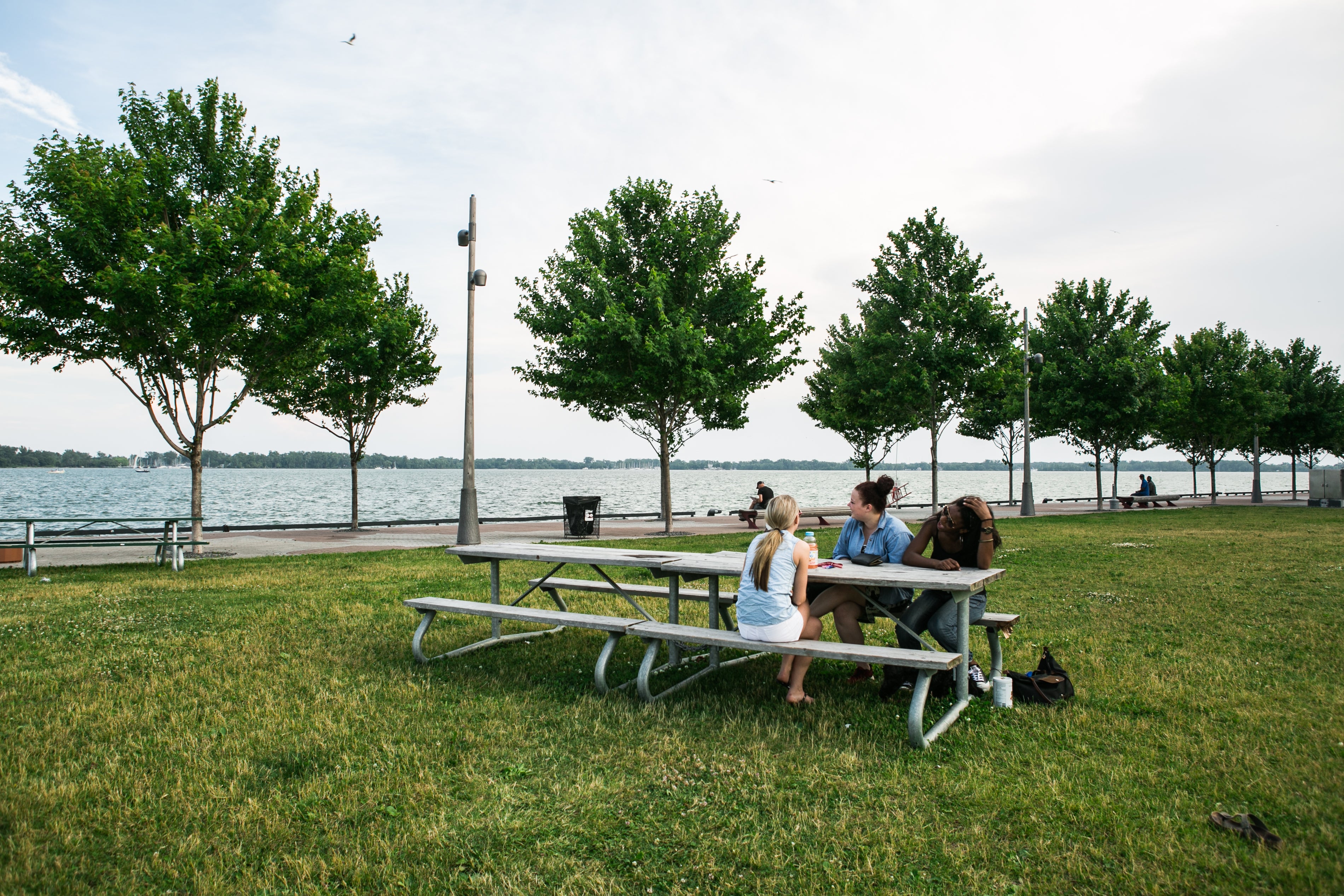
Students from neighbouring George Brown College often visit Sherbourne Common throughout the day, along with the Water’s Edge Promenade pictured here (Image credit: Connie Tsang)
If you’re curious how this special space got its name, you might be surprised to learn it was chosen through an online public naming contest we held back in 2009. The name, Sherbourne Common incorporates the park’s location at the foot of Lower Sherbourne Street, with the idea of a common – a space that belongs to the people.

